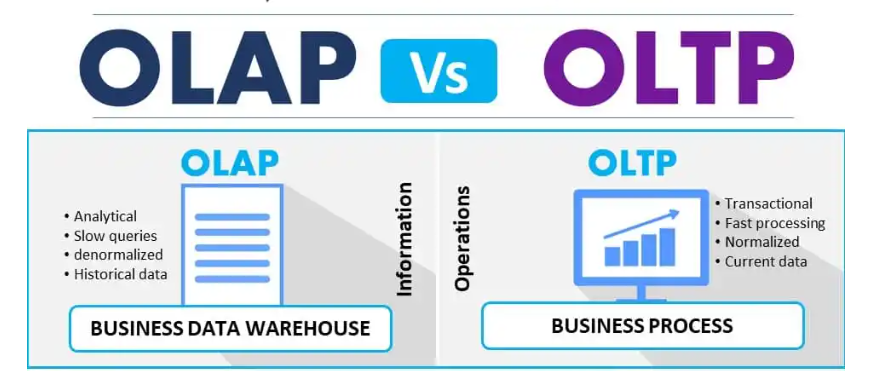OLAP stands for Online Analytical Processing. OLAP systems have the capability to analyze database information of multiple systems at the current time. The primary goal of OLAP Service is data analysis and not data processing.
OLTP stands for Online Transaction Processing. OLTP has the work to administer day-to-day transactions in any organization. The main goal of OLTP is data processing not data analysis.
- OLTP and OLAP both are online processing systems.
- OLTP is an online database modifying system, whereas OLAP is an online database query answering system.
ONLINE TRANSACTION PROCESSING SYSTEM (OLTP)
- OLTP system is mainly focused on the record the current Insertion, Update, and Deletion while transaction.
- OLTP system is traditional DBMS data is always detailed and organized.
- OLTP is a market-oriented process. It helps to increase the user’s self- service and productivity.
EXAMPLE:
- OLTP is a system that manages transaction-oriented applications on the internet, for example, ATM, Online banking, Sending a text message, Order entry, etc.
ONLINE ANALYTICAL PROCESSING SYSTEM (OLAP)
- OLAP mainly focuses on extract information from a large database and analyze it for decision making. It helps to plan, problem-solving and decision support.
- OLAP allows only read and rarely write operation for that mostly select query used.
- Denormalization removes the dependability among the tables which in terms reduces the number of tables. The large sum of data using denormalization is the best solution.
- The transactions in OLAP are less frequent as compared to OLTP.
EXAMPLE:
- OLAP is an online system that reports to multidimensional analytical queries like financial reporting, forecasting, etc.
- The example for OLAP is to view a financial report, or budgeting, marketing management, sales report, etc. It stores historical data that has been inputted by OLTP.
DIFFERENCE BETWEEN OLTP AND OLAP
Data:
- OLTP and its transactions are the sources of data.
- In OLAP different OLTPs database becomes the source of data for OLAP.
Transaction:
- OLTP has short transactions, whereas OLAP has long transactions.
Normalization:
- OLTP database has normalized tables (3NF).
- The tables in the OLAP database are denormalized. A denormalized form is a form in which a table where it is not dependent on another table for data.
Queries:
- The OLTP queries are simpler and short and hence require less time and space while processing.
- OLAP also allows a user to execute complex queries to extract multidimensional data.
Integrity:
- OLTP database gets updated frequently. A transaction in OLTP may fail in the middle, which may affect data integrity.
- OLAP database does not get frequently modified. Hence, data integrity is not affected.
